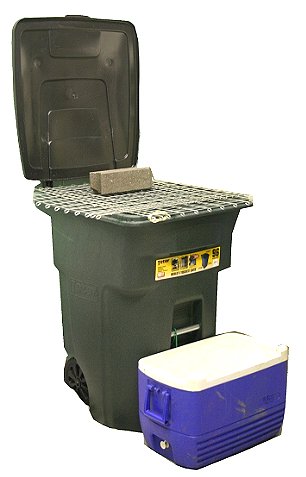
Quarantine for Koi and Pond Fish: How To Prevent Fish Diseases
Quarantine – by Doc Johnson

Quarantine is the best method (almost the only method) to reduce disease introductions. Let me outline a quarantine facility and protocol as if the fish we were discussing were quite valuable. I have a video that discusses this over at Youtube.
First, a large facility is required for larger fish like Koi, 100-150 gallons is good. Always a fish should have a hiding place, perhaps friendly tankmates and a lot of room to turn around.
It should have a fully cycled filter sponge or other type of effective nitrification system, fully operational.
Mark my words: A quarantine or hospital tank with bad water is infinitely worse than no quarantine at all.
Temperature should be 72 to 78 degrees in quarantine (78 actually). People heat their fish to 86 degrees to kill Ich and it ends up accelerating bacterial overgrowth and decreasing oxygen capacity of the system.
pH should be supported with Neutral buffer dosed according to label instructions. (Ph Video)
You could dose the quarantine with 0.3% salt (Noniodized salt at 3 teaspoons per gallon).
Alternativevly you could endeavor a series of treatments with Clout.
The quarantine should be completely covered or you can float some foam on the surface. Koi like to jump out, and that can be costly.
You should check Ammonia and pH in quarantine each and every day. Ammonia should be ZERO.
Mark my words: pH will normally crash in Koi quarantine unless buffered.
Some quarantines have “gravel” coral or oyster shell and that bill prevent it.
Water testing in Quarantine Video
You could feed an antibiotic food during the stay in quarantine.
The facility can be safely treated with Dimilin (or similar) while in quarantine, even with the salt, etc. This will stop the introduction of Lerneiid and Branchiurian parasites.
Once your new fish are in the quarantine, if it’s possible, the first thing to be done is to find someone with a microscope to help you determine if there are parasites living on the surface of the fish. Even if you don’t recognize what the “bugs” are, it helps to know from the outset that there is something
eating at the fish. You can describe what you saw to someone like me, later. Notice things like: How fast the “bug” moved, how big it seemed to be, how it moved, whether it had a nucleus or two in it, what shape the nucleus was, and whether it was armed with hooks, flagella, or what. What is the general shape of the thing? All this helps.
Finally, the quarantine should be of a 14-21 day duration perhaps longer, so long as water quality can be supported with changes, etc. as needed.
– Note From Doc Johnson
“I will often quarantine fish which came in sick, for months and months. If the fish came in during the peak of the summer season and they hold up well
and come from healthy stock, I will usually observe them in quarantine for a week and then move them into the collection.” ~ Doc Johnson
